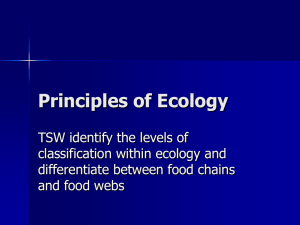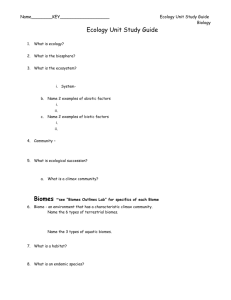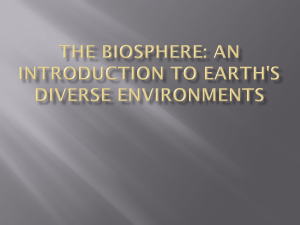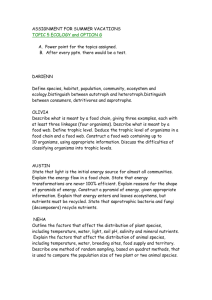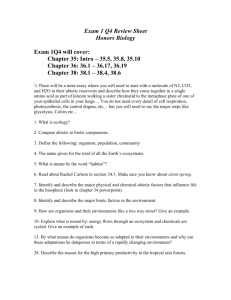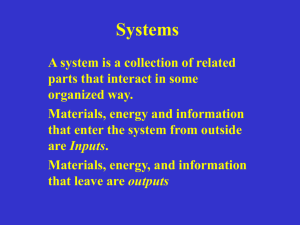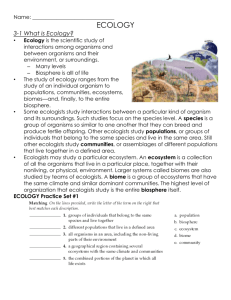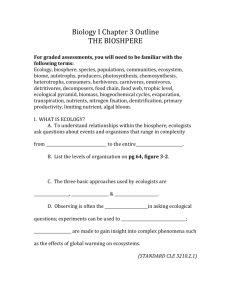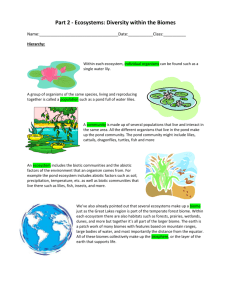Ecology Worksheet: Levels, Biomes, Interactions, Energy
advertisement
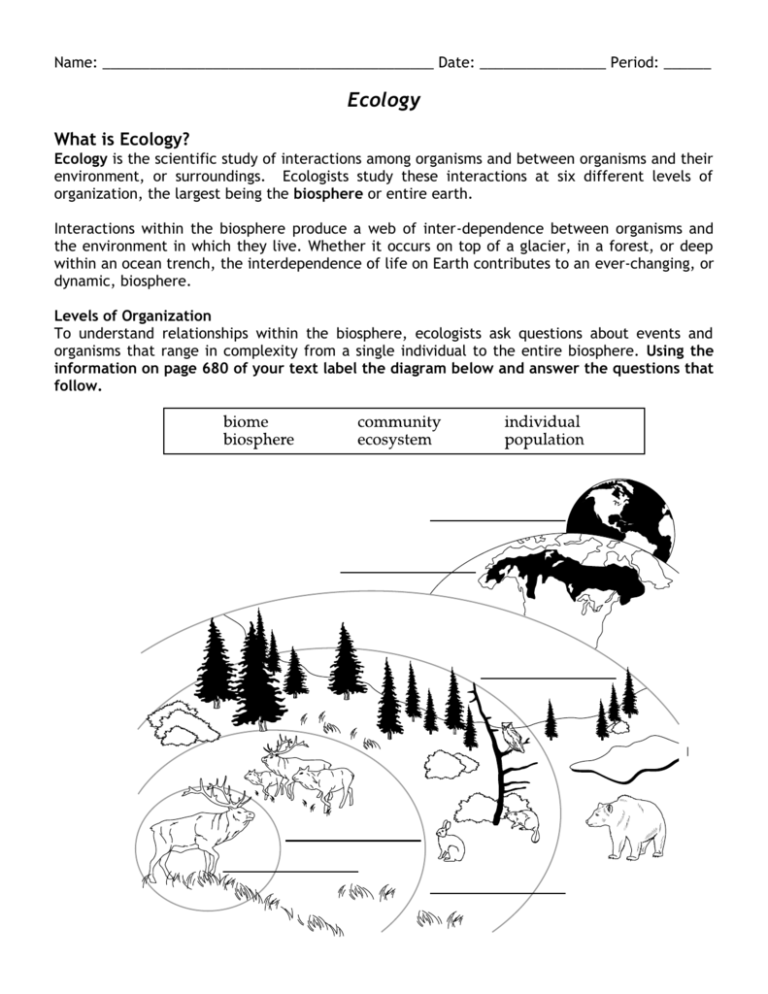
Name: __________________________________________ Date: ________________ Period: ______ Ecology What is Ecology? Ecology is the scientific study of interactions among organisms and between organisms and their environment, or surroundings. Ecologists study these interactions at six different levels of organization, the largest being the biosphere or entire earth. Interactions within the biosphere produce a web of inter-dependence between organisms and the environment in which they live. Whether it occurs on top of a glacier, in a forest, or deep within an ocean trench, the interdependence of life on Earth contributes to an ever-changing, or dynamic, biosphere. Levels of Organization To understand relationships within the biosphere, ecologists ask questions about events and organisms that range in complexity from a single individual to the entire biosphere. Using the information on page 680 of your text label the diagram below and answer the questions that follow. 1. What level of organization contains all of the organisms of one species that live in a certain area? 2. What is the highest level of organization studied by ecologists? Biomes Regional climate, the average year-to-year conditions of temperature and precipitation of an area, and other abiotic factors result in different biomes. The characteristics of these biomes greatly influence where communities are distributed. 1. Using the diagram on page 689 of your text, where would you typically find tropical forest biomes? 2. How would the yearly average precipitation and temperature conditions (climate) of the tropical forest biome compare with a desert biome? Community Structure – Interspecific Interactions Within a community there are multiple populations, how these organisms interact with one another can greatly influence population structure and dynamics. Complete the following table using the information available on pp. 740 – 743 of your text: Effect on Effect on Interspecific Definition Species Species Example Interaction 1 (+/-) 2 (+/-) Competition Mutualism Predation Herbivory Parasitism (& Pathogens) Community Structure – Energy Flow At the core of every organism's interaction with the environment is its need for energy to power life's processes. The flow of energy through an ecosystem is one of the most important factors that determine the system's capacity to sustain life. Complete the following chart using your previous knowledge and text (pp. 744 & 745 may be particularly helpful). Definition Autotroph Producer Chemoautotroph Herbivore Carnivore Consumer /Heterotroph Omnivore Detrivore Decomposer 1. What is the difference between a food chain and food web? 2. What is a trophic level? Energy Pyramids Theoretically, there is no limit to the number of trophic levels that a food chain can support. But, only part of the energy that is stored in one trophic level is passed on to the next level. This is because organisms use much of the energy that they consume for life processes, such as respiration, movement, and reproduction. Some of the remaining energy is released into the environment as heat. Only about 10 percent of the energy available within one trophic level is transferred to organisms at the next trophic level. For instance, one tenth of the solar energy captured by grasses ends up stored in the tissues of cows and other grazers. Only one tenth of that energy—10 percent of 10 percent, or 1 percent total—is transferred to the humans that eat the cows. Thus, the more levels that exist between a producer and a top-level consumer in an ecosystem, the less energy that remains from the original amount. 1. What is the role of sunlight here? 2. How is energy incorporated into the ecosystem shown? NOTE: first-level consumers are the same as primary consumers, second-level are the same as secondary, thirdlevel are the same as tertiary… Changing Ecosystems – as you have seen, ecosystems themselves are complex “organism” where disturbances in a few or only one of the biotic or abiotic factors can cause major changes. Predictable changes in an community over time due to these disturbances is known as ecological succession.
